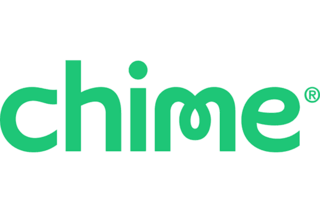Regional Banks Slash Their Fees in Order to Win Back Customers
The banking industry is full of stiff competition, overwhelming consumers with options for choosing a bank. Smaller, regional banks are always vying against the larger, nationwide institutions. But in the last 15 years or so, a new sector of banking is upping the ante: digital banks.
These newcomers continue to grow in a post-pandemic world, regional banks — sandwiched between online and brick-and-mortar institutions — must innovate to compete.
The rise of digital banking
Computers have been used to assist banks for many decades, but the concept of exclusively digital banking has proliferated only over the last decade and a half. Now, institutions like Ally Bank and Chime are some of the most popular banks in America while operating entirely online, siphoning clientele (and their deposits) from regional banks.
The rise in these banks can be attributed to several factors. Some might say the timing was ripe for new options as trust in banking giants faltered amid the 2007 financial crisis. Or that the growing ubiquity of smartphones in the years after played a role by making digital banking extremely accessible. But another important factor in the success of digital banking is that those banks sought out a larger demographic than all but the largest traditional banks can.
“The thing with traditional banks is that you have to be near them,” Julianna Sansevero, senior analyst at Corporate Insight tells Money. “While that works for a lot of areas of the country, it doesn't work for all of them.” While they don’t have the physical dominance of centuries-old nationwide banks, these digital startups can still appeal to the same nationwide pool of prospective customers — something regional banks can’t do.
More recently, a sudden and dramatic need for contactless services thrust online banking fully into the spotlight. “The pandemic really exploded the need for a good digital banking experience, because everything was online, and it needed to be implemented quickly,” Sansevero says.
Indeed, in the first full month of the pandemic alone, registrations with online banking services rose by over 200%. Sansevero says that most people today still stick with online banking over brick-and-mortar companies.
What are regional banks doing to keep up?
The biggest regional banks and their larger, nationwide competitors have an easier time competing directly with the likes of Chime or Ally; these national banks have far more resources to invest directly to create their own digital experiences. Smaller regional banks (and community banks, for that matter), have taken to competing in other ways.
Most commonly, they do so by slashing costs for customers. “We’ve seen more and more smaller banks reducing fees,” Stephanie Sorage, senior research associate at Corporate Insight tells Money. “And overdraft fees, in particular. Those have come under scrutiny with more regulations and federal attention, and we've seen a dramatic reduction in them, too.”
Regional banks have also taken cues from their larger counterparts when it comes to satisfying their customers’ needs. While early direct deposits were a feature introduced by Capital One, regional banks have taken to adopting early deposit features far more quickly than other nationwide banks. Corporate Insight has pointed out Cleveland-based KeyBank as a particularly skilled innovator in this area; the company’s “Manage Direct Deposits” interface allows customers to automate the addition and removal of direct deposits to their accounts.
Banks of any size with sufficient resources can and have adopted other banks’ innovations; while regional banks have slashed fees and implemented early direct deposit services to gain an edge, digital banks like Ally have also adopted these services.
Perhaps the only feature regional banks have that online-only banks couldn’t replicate are physical branches. Being able to physically deposit cash at a bank is a convenience not afforded by online-only banks, as is access to professional guidance from an advisor who can get to know a customer and their specific needs.
Regional banks at odds with new regulations
In early 2023, several midsize banks were forced into closure after their clients withdrew more funds than the banks could pay. This chain of regional bank collapses led many Americans to withdraw their own deposits for fear of a contagion spreading to their bank.
Save for the handful of banks closed or absorbed in the immediate aftermath of the crisis, the rest of the country’s regional banks avoided this fate. But many customers who left their banks would turn to digital banks like Ally and Marcus by Goldman Sachs instead of going back. The following quarter saw deposits fall even at the largest regional banks while digital competitors’ deposits grew. Those who opted to stay with their traditional brick-and-mortar institutions chose to go with national banks like JPMorgan Chase, likely because their size provided peace of mind.
Now, not only must regional banks keep innovating, they must also assuage their customers' solvency fears. New regulations may be able to help; in August, regulators announced plans to up the amount of long-term debt banks would need to take on. These changes would only affect larger regional banks — those holding over $100 billion in assets — but the changes might well bring back deposits to beleaguered midsize banks also.
More from Money:
Back to Best Banks of 2023-2024
Best Banks and Credit Unions for Students 2023-2024
Best National Banks - 2023-2024



